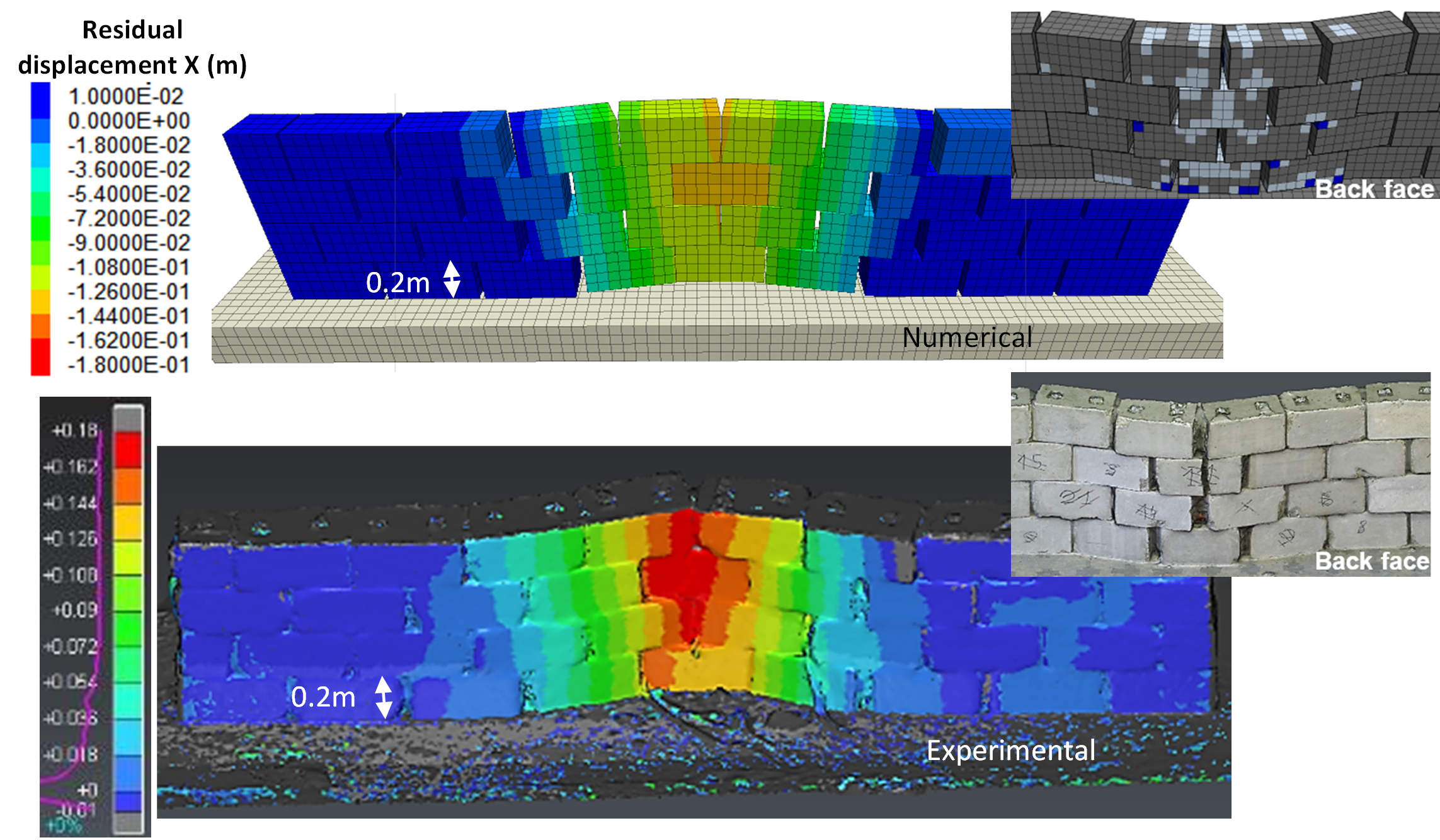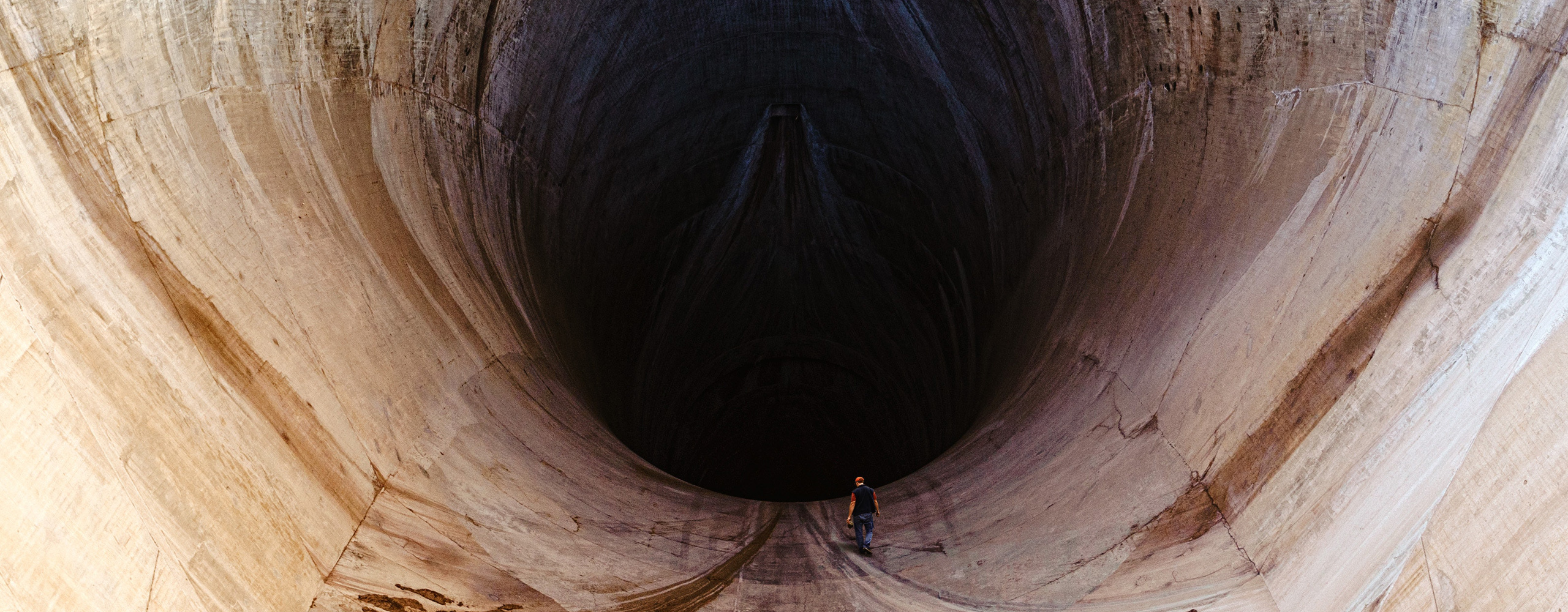Doctoral Candidate | Civil Engineering
Université Grenoble Alpes (France) | Geolithe
Advisors: Stéphane Lambert, Pascal Villerd, and Jean-Philippe Jarrin
Itasca Mentor: Marco Camusso

Introduction
Bloc Armé® is an innovative technology that consists of concrete blocks linked to each other by metallic elements and stacked to form rockfall protective walls (Figure 1). The main innovation lies in the reinforcements that ensure the bonding of the blocks and give the structure the ability to distribute the forces and dissipate energy.
The objective is to understand and model the dynamic response of the innovative protection structure Bloc Armé®. The research is organized in two main steps:
1) Experimental Step: Study the Dynamic Responses
The aim of the experiments was to study the dynamic response of the structure and to improve the design. Two experimental campaigns were performed: at real scale in 2017 and at small scale in 2018. The tests provided a large set of experimental data, permitting studies of the dynamic response of the tested structures as well as for calibrating and validating the numerical models.
2) Numerical Step: Model Developed in FLAC3D
The goal of this step was to develop a numerical model that could:
- assess the structure’s withstanding capacities; and
- predict the behavior of the impacted structure, including deformation, damage, and residual capacity.
The FLAC3D Model of the Structure
The simulations aimed to globally reproduce the displacement behavior of the wall during impact while accounting for the real behavior of each component. The model of the structure is developed with FLAC3D. The model is, as in the real structure, composed of distinct blocks interconnected by structural elements, where the contacts between the blocks, base, and projectile are managed using the FLAC3D interfaces. The metal reinforcements are modeled with an assembly of piles and cables, which represent the bars and plates, respectively (presented in Figure 2). The real assembly, however, contains spaces around the bars as well as between the plates and bars. These spaces are modeled using deformable links in the model, where stiffness of the springs is null when displacement is free or high otherwise. Blocks of the structure are modeled with the Mohr-Coulomb constitutive law, and the elastic law is used for the projectile and base. The constitutive models are kept simple, but the energy dissipation and force transfer modification associated with plasticization of the blocks are precise enough for describing the overall structure behavior.
When explicitly modeling the distinct elements, their nonlinear mechanical behavior and interactions are necessary when dealing with a structure where impact response is associated with energy transfer and dissipation. This ensures model robustness and permits obtaining relevant data associated with the physical mechanisms that influence the structure response.
Results
It was shown that the model was efficient in reproducing the general behavior of the structure. The blocks far from the impact location are slightly displaced, and a V-shaped deformation extends from the impact axis up to a width of two blocks on both sides of the impact axis. The maximum displacement is 14 cm for the simulation, which is about 18% lower than the 17 cm observed experimentally. Figure 3 shows a result comparison between the wall displacements for the small-scale numerical simulation and a small-scale impact of 1040 J.
The comparison of the evolution of the wall displacement with the experimental results from the video shows similar kinematics (Figure 4). The displacement of the higher point of the wall increases regularly until the maximum displacement, before a reverse displacement is observed. However, the reversible displacement at the head is slightly smaller with the numerical simulation.
The energy dissipation due to different mechanisms, such as plasticization or friction between components, were computed in the numerical model using FISH functions.
For the small-scale wall with 1040 J impact, it was shown that the amount of dissipated energy quantified in the model reaches a total of 70% of the impact energy. The rest of the energy (30%) is assumed to be dissipated by deformation of the structural elements and propagated via elastic waves in the model. Plasticization of the impacted blocks dissipates about 35% of the impact energy. In this kind of structure, friction is an important source of energy dissipation, as friction dissipated about 40% of the impact energy, with two-thirds due to friction between blocks.
The model also permits reproduction of the behavior of a real-scale wall subjected to an impact of 50 to 125 kJ in kinetic energy.
Conclusion
The experimental impact tests allowed a comparison of the numerical results with experimental measurements. The FLAC3D model shows good capability to reproduce the dynamic behavior of the real structure. The model faithfully reproduces the relative displacements of the blocks and the plasticization. As a result, the final simulated deformation is very close to that observed experimentally and the maximum displacement is approached with acceptable precision.
The energy dissipation results provided useful information to better understand the dynamic behavior of the structures and improve the technology. The model will be used to perform parametric studies to identify prominent parameters and to design protective walls made of Bloc Armé®.
After the research presented here, high-energy impact tests, reaching 2000 kJ, were performed on real-scale walls. These tests permit improvement of the numerical model and validation of its robustness (Furet et al., 2021).
References
Furet, A. (2020) Modélisations expérimentale et numérique d'ouvrages pare-blocs modulaires : application à la technologie Bloc Armé®. Université Grenoble Alpes. ⟨NNT: 2020GRALI038⟩. ⟨tel-03022252⟩
Furet A., Lambert S., Villard P., Jarrin J-P. et Lorentz J. (2020b) Réponse sous impact de murs pare-blocs, Revue Française de Géotechnique, 163, 9 Doi: 10.1051/geotech/2020017
Furet A., Jarrin J-P., Lambert S., Villard P. (2021) Assessment of the robustness of a numerical model of Bloc Armé® rockfall protection walls considering high energies impacts on real-scale structures. Rock slope stability, Nov 2021, Chambéry, France. hal-03456731.




